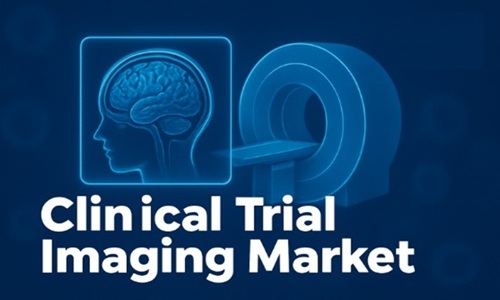Marketing in the digital age is a complex and ever-evolving endeavor. With the rapid advancements in technology and the constant shifts in consumer behavior, marketing teams face a multitude of challenges. From managing data privacy concerns to combating click fraud, the landscape is filled with obstacles that require innovative solutions. This article explores some of the most common challenges faced by marketing teams today and offers insights on how to overcome them.
Data Privacy and Security
One of the most significant challenges in digital marketing is ensuring data privacy and security. With the introduction of stringent regulations like the General Data Protection Regulation (GDPR) and the California Consumer Privacy Act (CCPA), marketing teams must navigate a complex web of compliance requirements.
Navigating Compliance
Marketing teams must ensure they collect, store, and use customer data in compliance with these regulations. This involves obtaining explicit consent from users, being transparent about data usage, and providing options for users to control their data.
Building Trust
Building trust with consumers is crucial. Marketing teams need to implement robust security measures to protect customer data from breaches and misuse. Regular audits and updates to data handling practices are necessary to maintain high standards of data security.
Managing Multichannel Campaigns
In today's digital world, consumers interact with brands across multiple channels, including social media, email, search engines, and websites. Managing multichannel campaigns effectively can be a daunting task for marketing teams.
Consistency and Cohesion
Ensuring consistency and cohesion across all marketing channels is essential. Marketing teams must develop a unified strategy that aligns messaging, branding, and customer experience across different platforms.
Tools and Technology
Utilizing advanced marketing tools and technologies can help manage multichannel campaigns more efficiently. Partnering with a digital marketing agency can provide access to these tools and the expertise needed to optimize their use, ensuring consistency and cohesion across all marketing channels. Marketing automation platforms, customer relationship management (CRM) systems, and analytics tools can streamline processes and provide valuable insights into campaign performance.
Content Overload and Differentiation
The digital landscape is saturated with content, making it challenging for brands to stand out. Marketing teams must find ways to differentiate their content and capture the attention of their target audience.
Creating Quality Content
High-quality content that resonates with the target audience is key. Marketing teams should focus on creating valuable, informative, and engaging content that addresses the needs and interests of their audience.
Innovative Formats
Experimenting with innovative content formats, such as interactive infographics, videos, and podcasts, can help capture attention. Diversifying content types and leveraging new media can set a brand apart from the competition.
Combatting Click Fraud
Click fraud is a significant issue in digital advertising, where fraudulent clicks on ads result in wasted budgets and skewed performance data. This practice can be detrimental to marketing campaigns, especially for businesses relying heavily on pay-per-click (PPC) advertising.
Identifying Click Fraud
Marketing teams need to be vigilant in monitoring their ad campaigns for signs of click fraud. Unusual spikes in click-through rates, low conversion rates, and repetitive clicks from the same IP address are indicators of potential click fraud.
Preventative Measures
Implementing preventative measures can help mitigate the impact of click fraud. Here are some strategies:
Use Fraud Detection Tools: Invest in tools that specialize in detecting and preventing click fraud. These tools can analyze traffic patterns and identify suspicious activity.
Monitor Campaigns Regularly: Regular monitoring of ad campaigns can help identify and address click fraud early. Set up alerts for unusual activity.
Geo-Targeting and IP Exclusion: Restricting ads to specific geographic locations and excluding known fraudulent IP addresses can reduce the risk of click fraud.
Set Click Limits: Implement limits on the number of clicks per user or IP address to prevent excessive clicks from the same source.
Adapting to Algorithm Changes
Search engines and social media platforms frequently update their algorithms, impacting the visibility and performance of digital marketing campaigns. Staying ahead of these changes is a continuous challenge for marketing teams.
Staying Informed
Marketing teams need to stay informed about algorithm updates and understand their potential impact on campaigns. Following industry news, attending webinars, and participating in professional forums can provide valuable insights.
Flexibility and Adaptation
Being flexible and ready to adapt strategies is crucial. Marketing teams should regularly review and adjust their SEO, social media, and content strategies to align with the latest algorithm changes.
Measuring ROI and Performance
Measuring the return on investment (ROI) and overall performance of digital marketing efforts is essential but challenging. Marketing teams must track a wide range of metrics to evaluate the effectiveness of their campaigns.
Identifying Key Metrics
Identifying the key metrics that align with business goals is the first step. Common metrics include conversion rates, customer acquisition cost (CAC), and lifetime value (LTV).
Attribution Models
Attribution models help determine which marketing channels and touchpoints contribute most to conversions. Using sophisticated attribution models can provide a clearer picture of the customer journey and help optimize marketing spend.
Continuous Improvement
Regular analysis of performance data allows marketing teams to identify areas for improvement. Implementing A/B testing, analyzing customer feedback, and adjusting strategies based on data-driven insights can enhance the effectiveness of marketing efforts.
Conclusion
Marketing in the digital age presents numerous challenges, from ensuring data privacy to combating click fraud and adapting to algorithm changes. However, by implementing strategic solutions and staying informed about industry trends, marketing teams can navigate these obstacles and achieve success. Building a strong online presence, managing multichannel campaigns, creating differentiated content, and measuring performance effectively are crucial steps in overcoming the hurdles of digital marketing. With the right approach, marketing teams can turn these challenges into opportunities for growth and innovation.


















